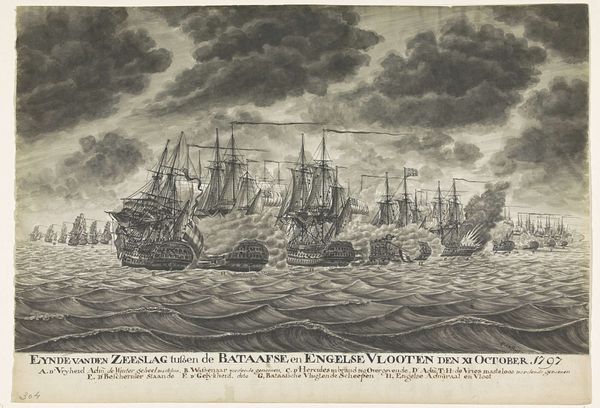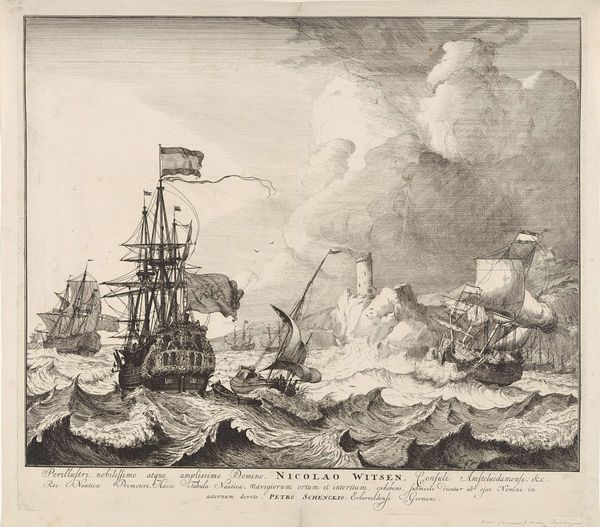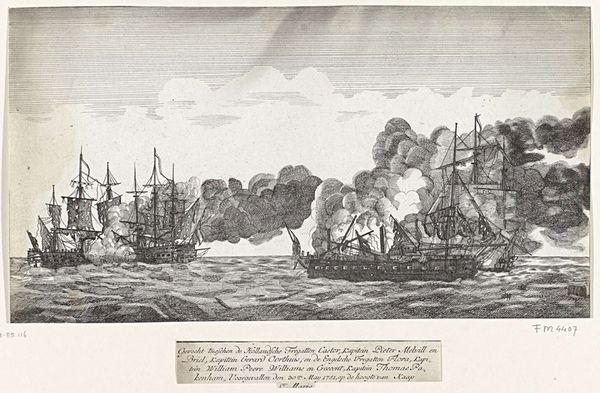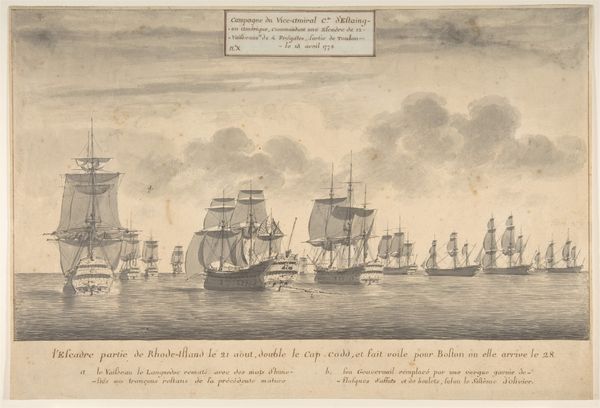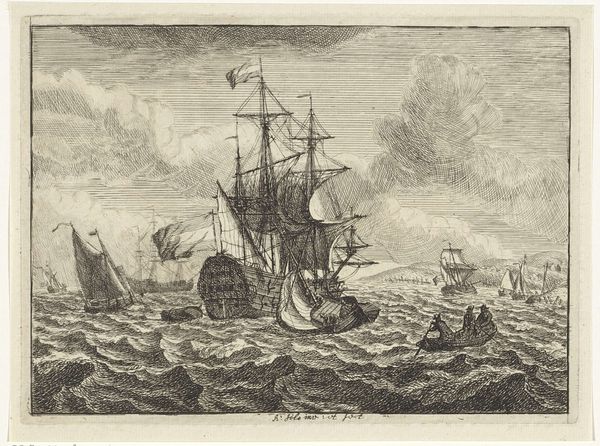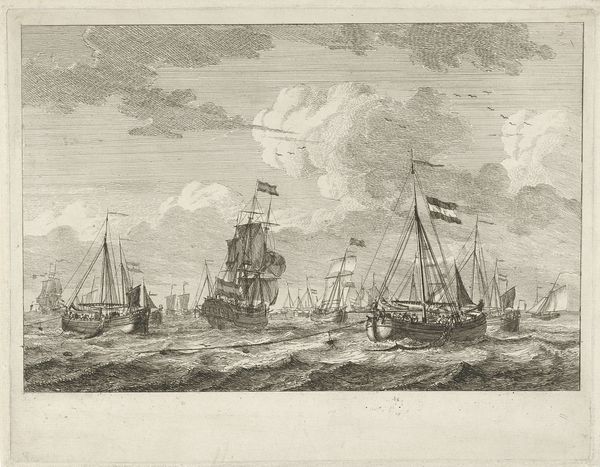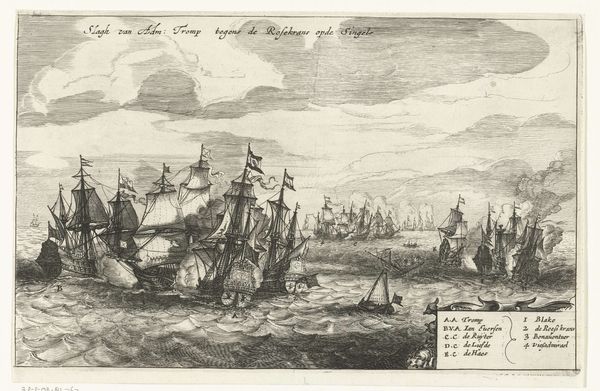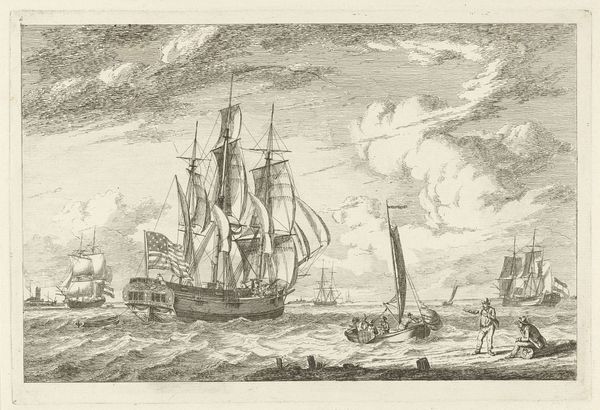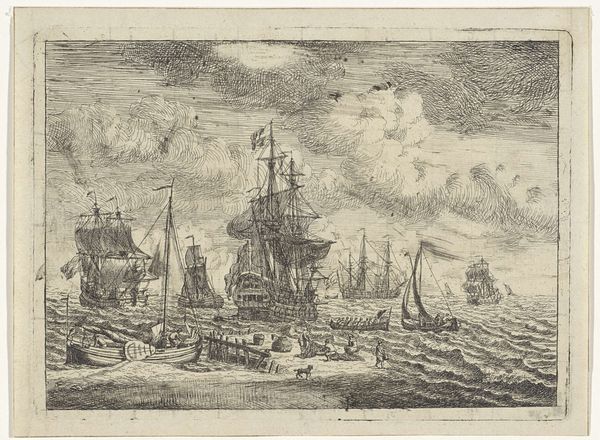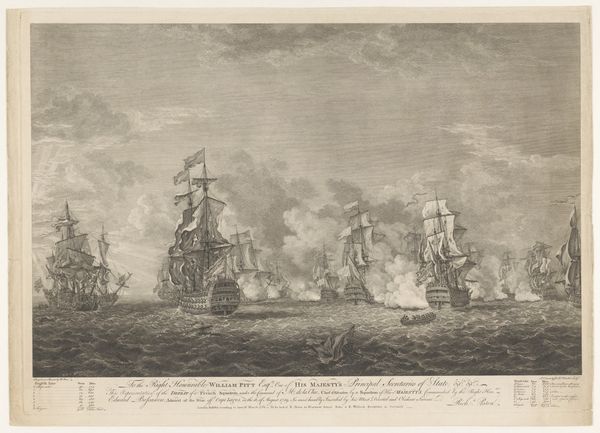
Begin van de zeeslag bij Kamperduin, 11 oktober 1797 1797 - 1798
0:00
0:00
drawing, print, pencil, engraving
#
pencil drawn
#
drawing
# print
#
pencil sketch
#
landscape
#
pencil drawing
#
romanticism
#
pencil
#
genre-painting
#
history-painting
#
engraving
Dimensions: height 377 mm, width 535 mm
Copyright: Rijks Museum: Open Domain
Curator: Think about the drawing, engraving, and pencil work involved. These aren't spontaneous, impulsive acts; they are the result of deliberate decisions. How does the choice of these specific materials and techniques affect your interpretation? Editor: Well, we're looking at Frans Anton van Spijck's "Begin van de zeeslag bij Kamperduin, 11 oktober 1797," made between 1797 and 1798. It's a print and drawing in pencil. The scene feels chaotic, but incredibly detailed given the medium. How do we unpack that contrast between detail and the violence portrayed? Curator: I see it as an illustration of power dynamics. Pencil, engraving – relatively accessible materials, creating an image of naval conflict. Consider the means of production: prints meant for wider circulation. Who was this artwork made for, and what kind of message was it meant to spread? Editor: It was made around the time of the battle, so perhaps propaganda? How would the context of war influence the choice to depict it in a relatively reproducible form? Curator: Exactly. The artist probably wanted to make visible the spectacle of naval power but without the elitism of oil on canvas only accessible to few. The print facilitates distribution to a public, influencing perception through the visual portrayal of that event. Look at the details of the ships, and how they contrast with the abstraction of the waves, smoke and sky... Editor: You're right! Focusing on the individual ships makes them appear grand, complex, and productive centers, versus the waves acting as raw and menacing material... I didn’t think of that. Curator: The process, then, is crucial for shaping meaning. The drawing depicts a kind of material confrontation but also participates to its narrative construction for larger societal consumption. What is your key takeaway regarding the relation between labor, materials and the war portrayed? Editor: By examining its means of production, I’m now aware that its production would shape public sentiment of the battle, something I originally wasn't conscious of.
Comments
No comments
Be the first to comment and join the conversation on the ultimate creative platform.
